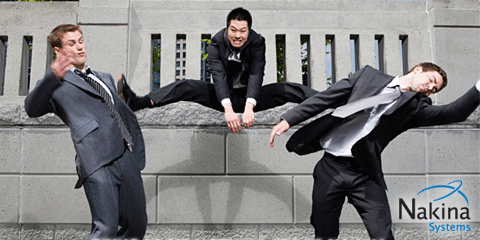
By Tim Young
SUPERCOMM 2009 visited Chicago’s McCormick Place a few weeks ago (Oct 21-23). The flagship show for the major telecom trade associations in the US (TIA and USTelecom) has been around since 1988, and was a regular fixture on any self-respecting North American’s telecoms event calendar throughout the 1990s and beyond.
Over the past few years, there have been some bumps in the road for the show developers regarding show vision and show ownership. This SUPERCOMM was intended, in many ways, to be a return to form for the event.
The event staff assembled an impressive array of speakers. C-level executives from major telco, wireless, and even cable companies were on hand to extol the virtues of their offerings, blast net neutrality, talk up their community service angle, express concern over over-the-top content, and generally address the state of the industry.
On day one of the keynotes, Ivan Seidenberg, CEO of Verizon, took issue with proponents of net neutrality and their suggestion “that network providers like Verizon and applications providers like Google, Amazon and others occupy fundamentally different parts of the Internet ecosystem - a binary world of 'dumb pipes' on the one hand and 'smart applications' on the other."
|
|
This SUPERCOMM was intended, in many ways, to be a return to form for the event. |
|


SUPERCOMM also assembled a high-powered panel discussion for day one, consisting of CTO-types from an impressive slate of companies: AT&T CTO John Donovan, Qwest CTO Pieter Poll, Verizon SVP-Technology Mark Wegleitner, BT 21CN President George Nazi, and Sprint VP of Device and Technology Management Matthew Oommen. The group discussed the ups and downs of the communications space, and each underscored the need for increased fiber rollouts, green technology, safe and reliable cloud computing, and other key growth areas for telcos around the globe.
In addition to strong talks from carrier representatives, the keynotes featured a
|
|
|
|

Seidenberg went on to say that this sort of thinking "is a mistake, pure and simple: an analog idea in a digital universe. It fundamentally misreads how innovation happens in a dynamic and collaborative industry.”
AT&T CEO John Stankey opened his keynote, on day two of the event, by saying that preparing for his address and attending the event on the day before the FCC’s hearings on net neutrality were slated to begin was a bit like preparing for the day before a funeral.
|
|

couple of government types who spent time expressing the positive benefits of increased broadband infrastructure for government and social purposes. Aneesh Chopra, CTO of the United States and Associate Director for Technology in the White House Office of Science and Technology Policy, talked up the current administration’s desire to increase innovation in the United States, and underscoring the need for broadband growth to make such innovations possible. Chopra also mentioned the lagging nature of US
article page
| 1
| 2
| 3
| 4 |
|
|






